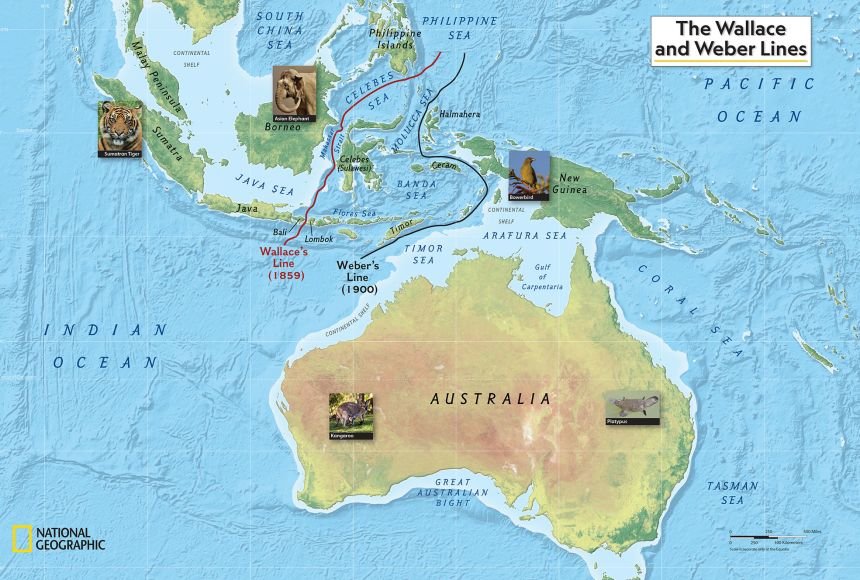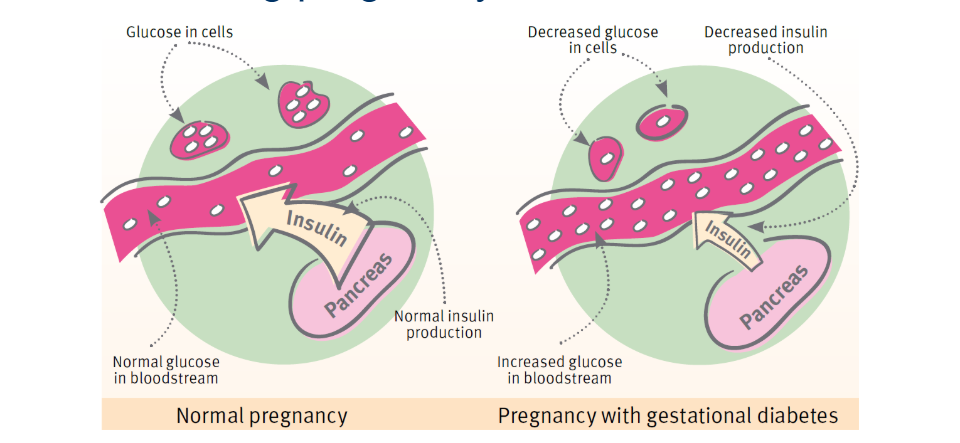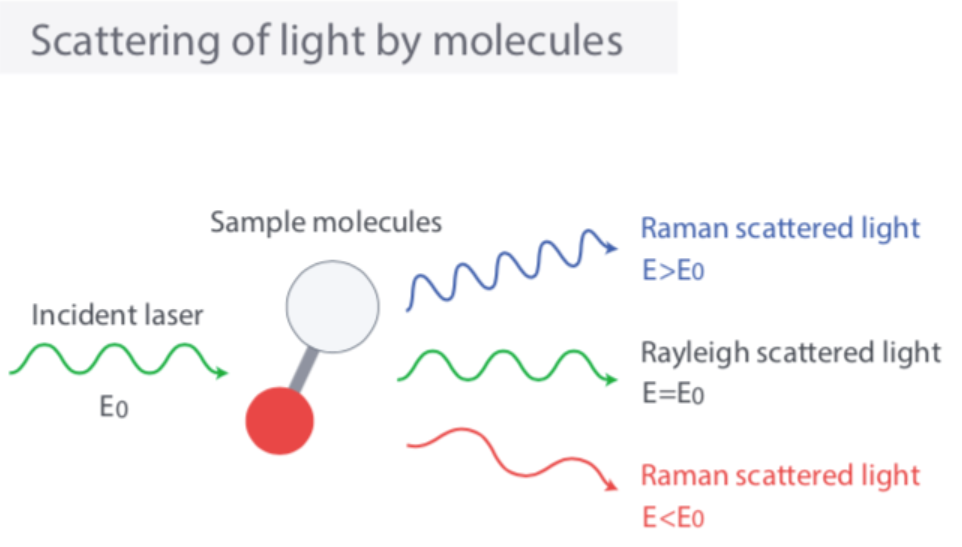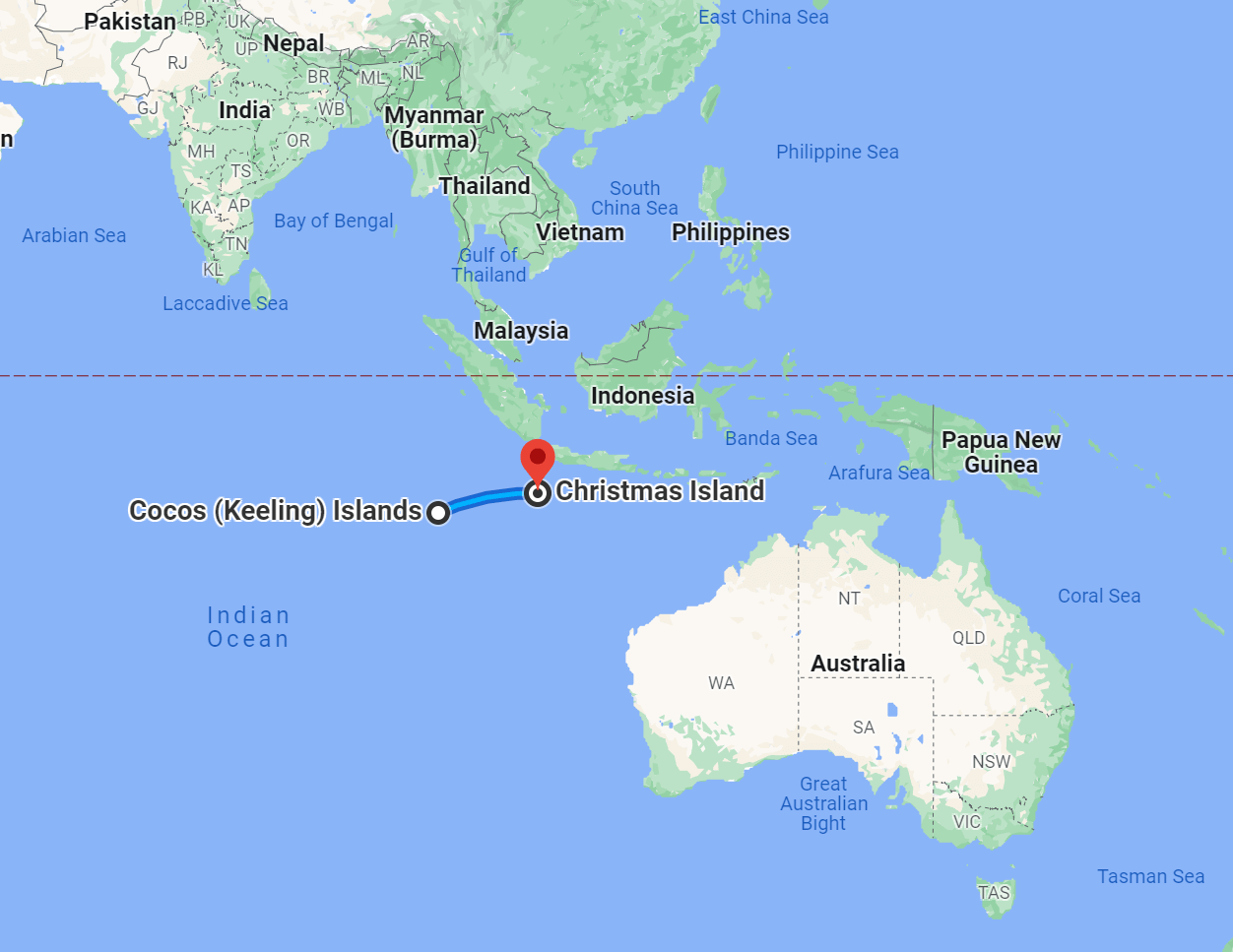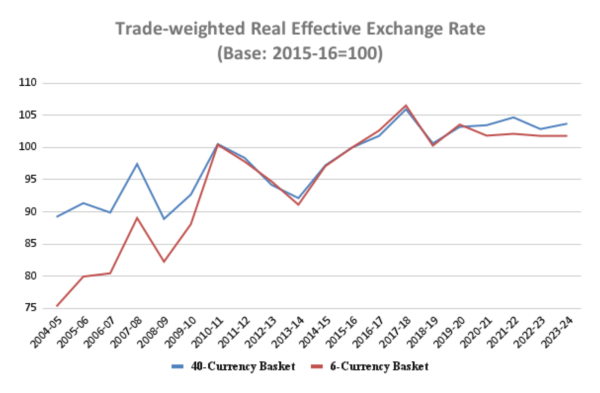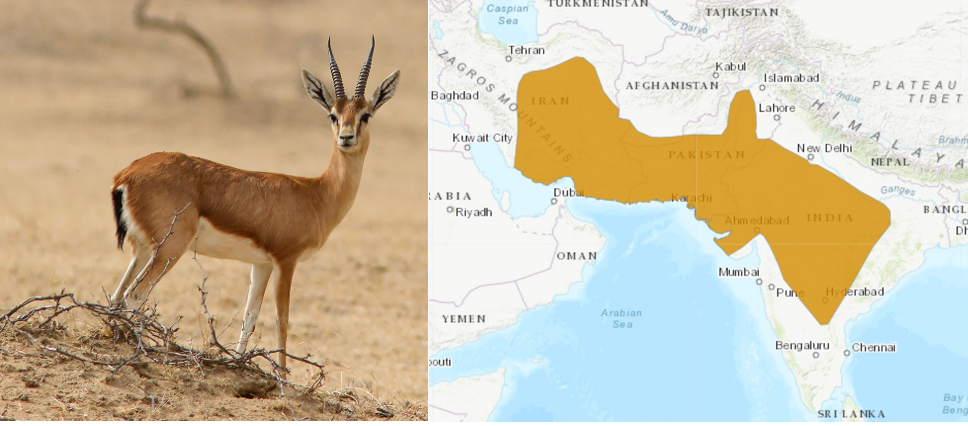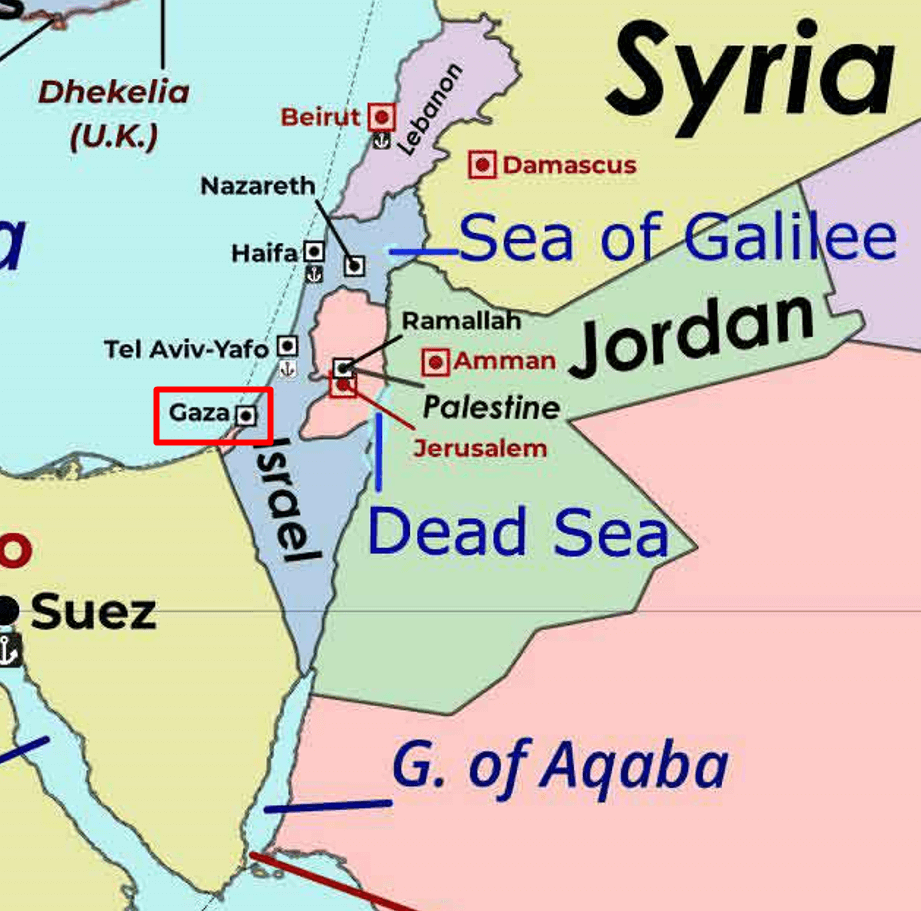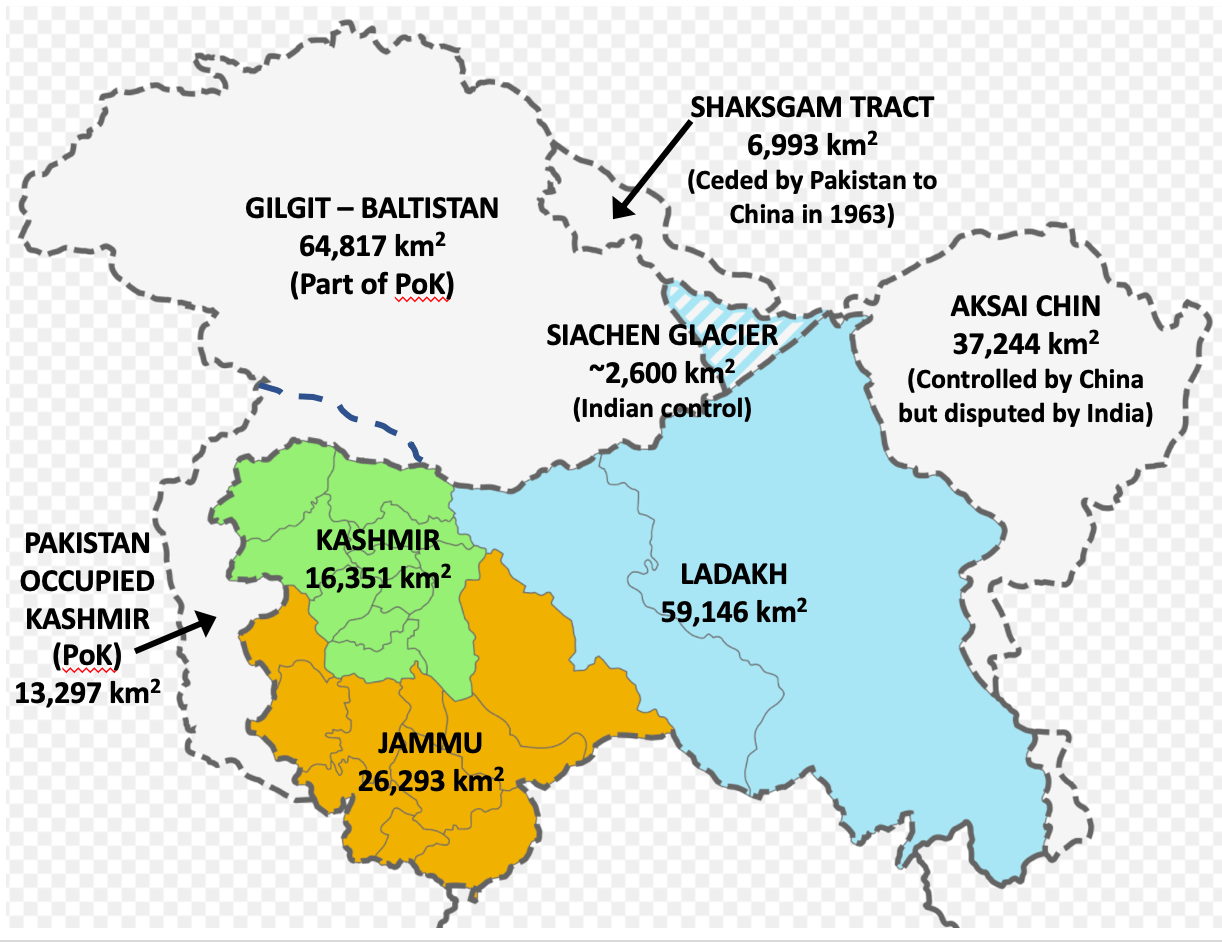
Current Affairs July 31, 2023: Clarion-Clipperton Zone, PM e-VIDYA, DAY-NRLM, RPwD Act, 2016, Parkachik Glacier Melting, Project Cheetah, Project Elephant, Worldcoin Projec
Subscribers of "Current Affairs" course can Download Daily Current Affairs in PDF/DOC
Subscribe to Never Miss an Important Update! Assured Discounts on New Products!
Must Join PMF IAS Telegram Channel & PMF IAS History Telegram Channel
{GS1 – Geo – Biogeography – 2023/07/31} Biogeographical Boundary
- Context (IT): A biogeographical boundary at the bottom of the North Pacific Ocean divides two distinct biological areas across the Clarion-Clipperton Zone (CCZ).
- It is similar to the Wallace Line boundary between the Oriental and Australian ecozones.
- A biogeographical boundary refers to a line or region that demarcates distinct biogeographical areas, which are defined by differences in the distribution of plant and animal species, as well as the ecological and environmental factors that influence their distribution.
|
Clarion-Clipperton Zone (CCZ) / Clipperton Fracture Zone
- The CCZ is a vast abyssal plain and fracture zone stretching 5,000 km between Mexico and Kiribati in the northern Pacific Ocean, with depths ranging from 3,500 to 6,000 metres.
- It is being researched for deep-sea mining due to the abundant presence of pollymetallic nodules.
- CCZ is a habitat for cetaceans, including blue whales (EN), baleen, and toothed whales.
|
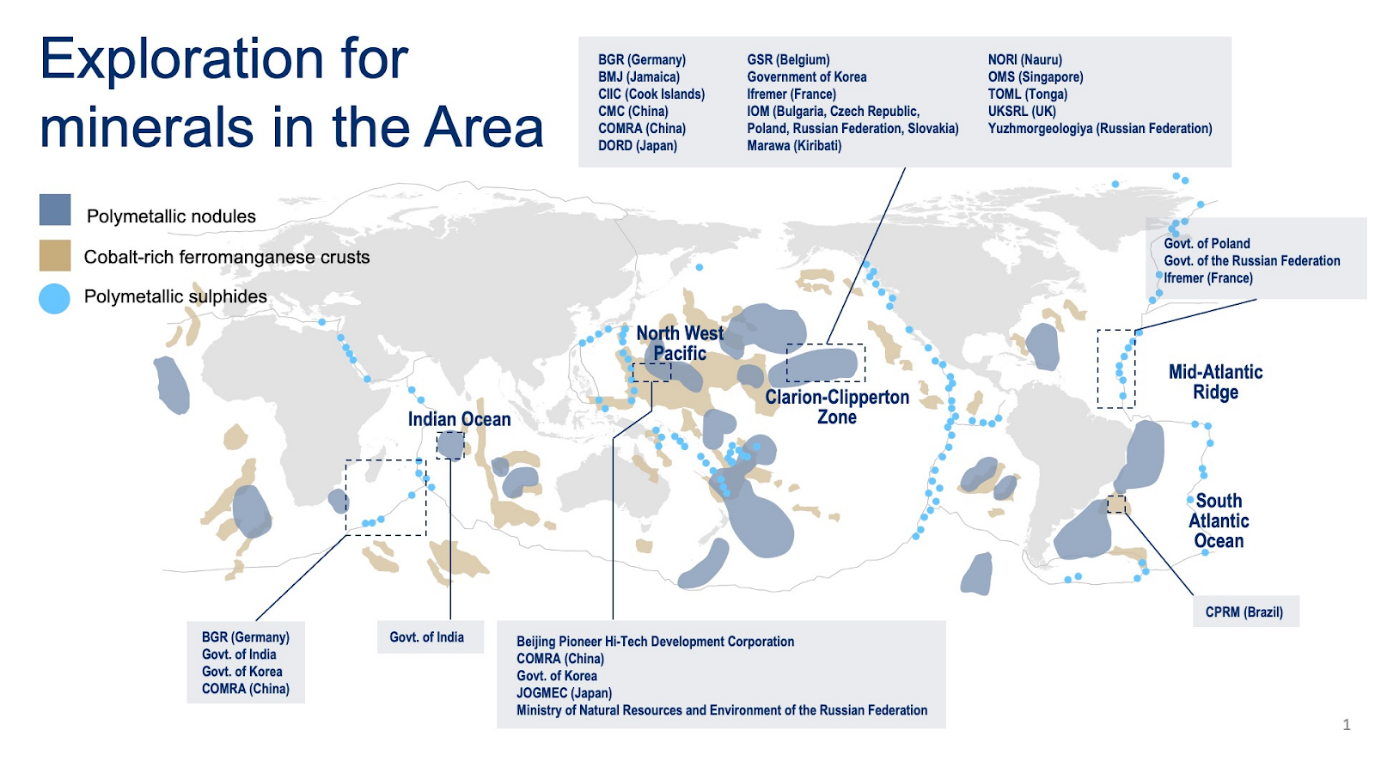
Wallace Line
|
{GS2 – MoE – 2023/07/31} Education For All
- Context (PIB): The Ministry of Education (MoE) launched the Understanding Lifelong Learning for All in Society (ULLAS) mobile application to promote basic literacy.
- It will serve as a digital gateway for learners through the DIKSHA portal of NCERT.
ULLAS: New India Literacy Programme
- In March 2023, the MoE (formerly the Ministry of Human Resource Development) launched the ULLAS scheme for FYs 2022-2027 to cover all the aspects of Education For All.
- It primarily targets citizens aged 15 and above who missed formal schooling.
- It imparts basic education, digital and financial literacy and critical/essential 21st century skills.

Salient Features of the scheme
- School will be a unit for the implementation of the scheme.
- Schools to be used for conducting surveys of beneficiaries and volunteers.
- Different strategies are to be adopted for different age cohorts.
- Performance Grading Index (PGI) for state/UT and district level will show the performance of States and UTs in implementing the scheme and achievements.
ULLAS Process

- It is being implemented through volunteerism for teaching and learning.
- Learners and volunteers can register through self-registration or via surveyors.
- It encourages volunteers to participate in nation-building as Duty or Kartavya Bodh.
- Student volunteers will be incentivised with credits in school/university and appreciation through certificates, letters of appreciation, felicitation, etc.
National Council of Educational Research and Training (NCERT)
Adult Education in the country
PM PM e-VIDYA
DIKSHA (Digital Infrastructure for Knowledge Sharing)
|


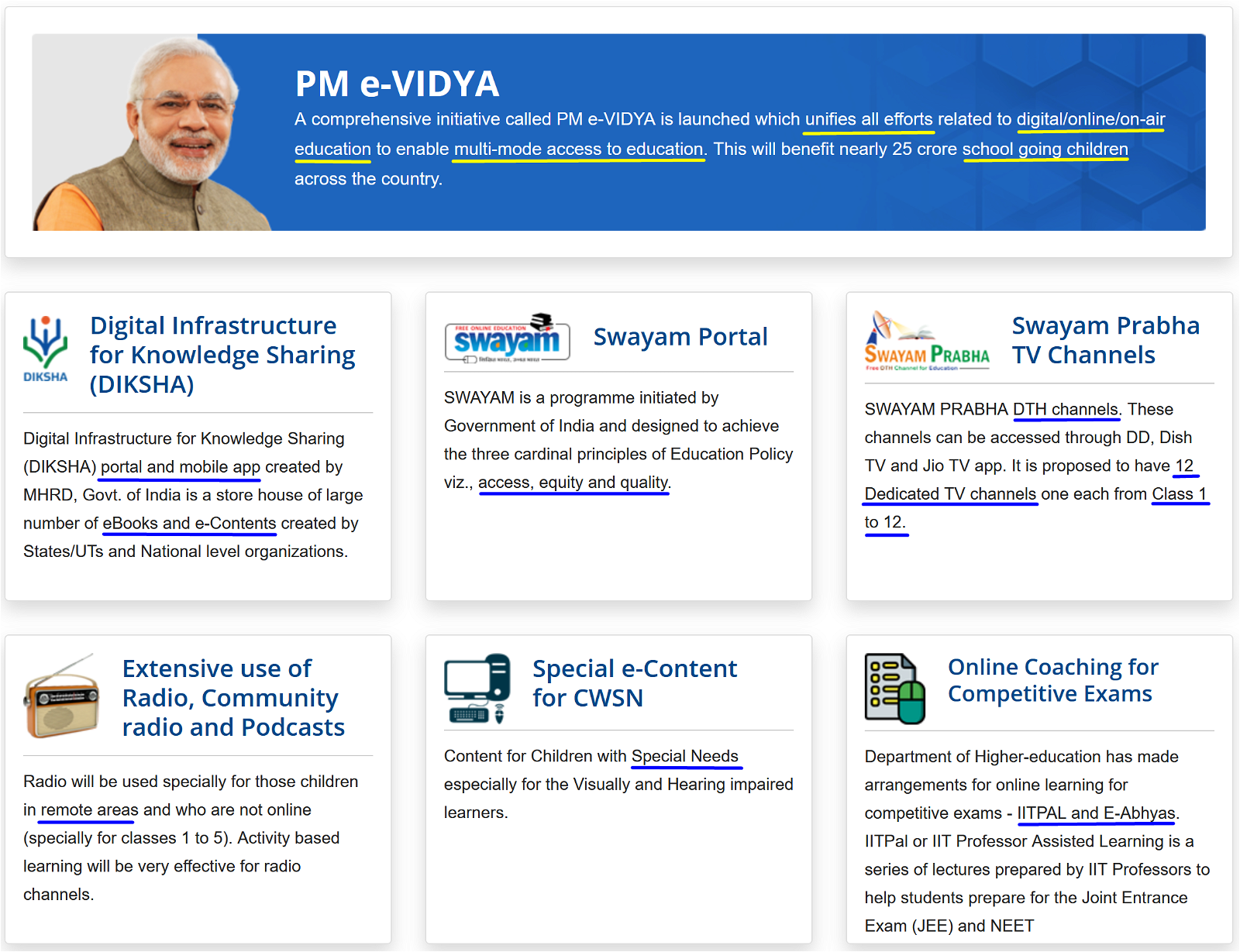
{GS2 – MoRD – 2023/07/31} DAY-NRLM
- Context (PIB): Deendayal Antyodaya Yojana-National Rural Livelihood Mission (DAY-NRLM) was launched by the Ministry of Rural Development (MoRD) in 2011.
- In 1999, after restructuring Integrated Rural Development Programme (IRDP), the MoRD launched Swarnajayanti Grameen Swarojgar Yojana (SGSY) to promote self-employment.
- SGSY is remodelled to form NRLM, thereby plugging the shortfalls of the SGSY programme.
- DAY-NRLM is implemented through a network of SHGs & Community-Based Organizations (CBOs).
- In 2021, the program had over 100 million members and had disbursed over ₹1 trillion in loans.
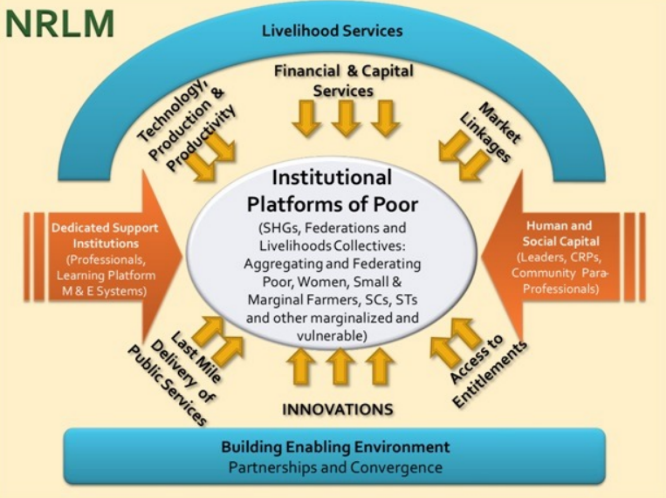
|
Key features of DAY-NRLM
- It provides financial services to SHGs and CBOs, such as loans, savings, and insurance.
- It gives skill training to SHG members in entrepreneurship, business management, life skills, etc.
- It helps SHG members to access markets for their products.

Sub-schemes under NRLM

Aajeevika Grameen Express Yojana (AGEY)
- Launched in FY 2017-18, the scheme aims to provide safe and affordable public transport services to rural communities.
- It engages CBOs or SHGs in managing and operating public transport services, thereby creating livelihood opportunities for rural youth and women.
Aajeevika Skills
- The scheme provides skill development training to rural youth and women.
- The training covers various sectors, such as agriculture, handicrafts, tourism, construction, etc.
Start-up Village Entrepreneurship Program (SVEP)
- SVEP aims to promote entrepreneurship in rural areas by facilitating the establishment and growth of micro-enterprises.
- It supports rural entrepreneurs, especially those from marginalised communities.
Mahila Kisan Sashaktikaran Pariyojana (MKSP)
- It empowers women farmers by enhancing their participation in agriculture and related activities.
- MKSP supports capacity building, training, and access to resources, technologies, and markets to improve women’s agricultural productivity and income.
Deen Dayal Upadhyaya Grameen Kaushalya Yojana (DDU-GKY)
- While not directly under NRLM, DDU-GKY complements its efforts by providing skill training and employment opportunities to rural youth from poor families.
- It aims to ensure inclusive growth by focusing on skill development and self-employment.
Interest Subvention Scheme (ISS)
- The ISS aims to provide interest rate subsidies to the Self Help Groups (SHGs) on their bank loans, making credit more affordable and accessible for rural women.
- This helps in promoting economic activities and entrepreneurship at the grassroots level.
{GS2 – MoSJ&E – 2023/07/31} Manual Scavenging
- Context (TH): Swachhata Abhiyaan app identified 6,253 cases of manual scavenging in India.
- Manual scavenging refers to manually cleaning, carrying, disposing, or handling human excreta or any dry or wet waste from insanitary latrines, open drains, septic tanks or other similar places.
- Manual scavenging is a dehumanising practice involving basic and often unsafe tools like brooms, buckets, and baskets, leading to serious health hazards, injuries, and even death.
- This practice is often associated with the caste system, where people from the so-called lower castes, such as Dalits, are forced to engage (due to socio-economic factors) in manual scavenging.
- This perpetuates the cycle of caste-based discrimination and social exclusion.
Present Status
- As per the 2011 Census, there were over 7,40,000 households still practising manual scavenging.
- The Safai Karamchari Andolan, an advocacy group working to eradicate manual scavenging, estimates that there are still around 1.8 million manual scavengers in India.
- According to the National Commission for Safai Karamcharis (NCSK), 482 manual scavengers died between 2016 and 2019.
- Many manual scavengers suffer from various health problems, including skin diseases, respiratory issues, and even death due to exposure to toxic fumes in septic tanks and sewer lines.
Laws to curb manual scavenging


Employment of Manual Scavengers & Construction of Dry Latrines (Prohibition) Act, 1993
- It aimed at eradicating the practice of manual scavenging and the construction of dry latrines, which require manual cleaning.
- The Act outlined penalties for individuals or organisations found guilty of employing manual scavengers or constructing dry latrines.
- The Act faced challenges due to its limited scope and enforcement issues.
Prohibition of Employment of Manual Scavengers and their Rehabilitation Act, 2013
- It was passed to reinforce the ban and to rehabilitate people employed as manual scavengers.
- The Act prohibits the employment of manual scavengers, manual cleaning of sewers and septic tanks without protective equipment, and the construction of insanitary latrines.
- No person, local authority, or agency should engage or employ people for hazardous cleaning of sewers and septic tanks. Mechanised cleaning of septic tanks is the prescribed norm.
- It seeks to rehabilitate manual scavengers and provide for alternative employment.
- Each local authority, cantonment board, and railway authority is responsible for surveying insanitary latrines within its jurisdiction. They shall also construct several sanitary community latrines.
- Each occupier of insanitary latrines shall be responsible for converting or demolishing the insanitary latrine at his own cost.
| Aspect | 1993 Act | 2013 Act |
| Main Objective | Prohibit the employment of manual scavengers. | Prohibit the employment of Manual Scavengers and ensure their rehabilitation. |
| Scope | Broader scope, covering identification, rehabilitation, alternative employment/livelihood and welfare measures. | |
| Definition of Manual Scavenger | Limited definition. | The expanded definition includes those engaged in the hazardous cleaning of sewers and septic tanks. |
| Penalties for Offences | Relatively less stringent. | Stricter penalties for offences, including imprisonment and fines. |
| Identification of manual scavengers | No specific mechanism. | Establishment of a survey to identify manual scavengers and maintain a database. |
Supreme Court Directive in 2014
- In 2014, the Supreme Court directed the government to take several measures, including:
- One-time cash assistance to people employed as manual scavengers.
- Houses for manual scavengers.
- Training in livelihood skills for at least one member of their families.
- Concessional loans to prop them up financially and help them find an occupation.
- Payment of Rupees 10 lakh in compensation for sewer deaths.
Schemes to curb manual scavenging
Self-Employment Scheme for Rehabilitation of Manual Scavengers (SRMS)
- It was a central sector scheme launched in 2007 to rehabilitate the remaining manual scavengers and their dependents in alternative occupations.
- After the enactment of the ‘Prohibition of Employment as manual scavengers and Their Rehabilitation Act, 2013’, SRMS was revised in synchronisation with the provision of the Act.
- The scheme identified manual scavengers, one from each family, who are provided one-time cash assistance of Rs. 40,000.
- The identified manual scavengers and their dependents are provided with:
- Capital subsidy and concessional loan for undertaking self-employment ventures.
- Assistance for procurement of sanitation-related projects.
- Training for skill development.
National Action Plan for Mechanised Sanitation Ecosystem (NAMASTE) Scheme
- It was formulated by MoSJ&E in 2022. It has replaced the Self-Employment Scheme for the Rehabilitation of Manual Scavengers (SRMS).
- It is being implemented jointly by the Ministry of Housing and Urban Affairs and the MoSJ&E.
- It aims to eradicate unsafe sewer and septic tank cleaning practices to ensure zero fatalities.
Benefits Under the Scheme
- Capital subsidies of up to ₹5 lakh on sanitation machinery costing up to ₹15 lakh.
- Training for the operators, during which a monthly stipend of up to ₹3,000 will be provided.
- Training sanitation workers in alternative occupations like agriculture, electronics assembling, etc.
Swachhata Abhiyaan Mobile Application
- The MoSJ&E launched it to capture the data of insanitary latrines still existing and the manual scavengers associated with them.
- Anyone could upload the data on the mobile app, which would then be verified by the district administration concerned.
Responsible Ministries/Bodies
Ministry of Social Justice and Empowerment (MoSJE)
- MoSJE is responsible for the welfare and empowerment of disadvantaged and marginalised sections of society, including scheduled castes (SC), Other Backward Classes (OBC), LGBT people, the disabled, the elderly, and the victims of drug abuse.
|
Departments under the Ministry of Social Justice & Empowerment
- Department of Social Justice and Empowerment (Samajik Nyaya and Adhikarita Vibhag)
- Department of Empowerment of Persons with Disabilities (Divyangjan)
- The subject of “Disability” figures in the State List in the Seventh Schedule of the Constitution.
National Commission for Safai Karamcharis (NCSK)
- NCSK was constituted in 1994 as a statutory body by an Act of Parliament for three years, i.e. up to 1997. However, the validity of the Act was extended up to 2004.
- With the lapsing of the “The National Commission for Safai Karamcharis Act, 1993” w.e.f. 2004, NCSK is a non-statutory body of the Ministry of Social Justice and Empowerment.
- The Commission’s tenure is extended from time to time through Government Resolutions.
- As per the provisions of the Prohibition of Employment as manual scavengers and their Rehabilitation Act, 2013, the NCSK has been assigned the work to monitor the implementation of the Act.
Reasons for Persistence of Manual Scavenging
- Gender bias: the provisions for the rehabilitation were not gender sensitive and directed towards men. However, around 95-98% of the individuals involved in manual scavenging are women.
- Urban-rural divide: Around 60% of those involved in manual scavenging are in rural areas. However, the focus of the scheme was on urban areas.
- Social aspect is ignored: government programs have emphasised the financial aspect and failed to address the caste-based oppression and related social conditions perpetuating this practice.
- Corruption: eligible individuals are excluded, ineligible, and ghost beneficiaries are benefitted.
- Lack of awareness: People lack awareness about the health hazards associated with MS.
- Insufficient implementation: laws and regulations are in place, but their implementation is dismal.
- Poor infrastructure: lack of proper sanitation infrastructure, cleaning technologies and implements has resulted in people engaging in manual scavenging.
{GS2 – MoSJ&E – 2023/07/31} RPwD Act, 2016
- Context (TH): Delhi HC instructs the Delhi government to follow the RPwD Act and ensure equal opportunities for disabled individuals in education.
- The number of disabled in India is between 5-10% of the population. Their integration into the mainstream is a step towards sustainable development. RPwD Act is a step in this direction.
- Rights of Persons with Disabilities (RPwD) Act, 2016 replaced the Persons with Disabilities Act of 1995, providing more rights to the disabled
- The rights include access to justice, free education, the role of local authorities as providers of employment and opportunity, and National and State funds.
- The act mandates 5% reservation for disabled candidates in all educational institutions.
- It gave full effect to the United Nations Convention on the Rights of Persons With Disability.
Salient features of the Act
- Persons with benchmark disability: A person with a disability (PwD) will be considered to have a benchmark disability if he or she has at least 40% of disability.
- Number of disabilities: The act increased the number of types of disabilities from 7 to 21.
- Dynamic and evolving concept: Under the act, the GOI can notify additional disabilities.
- Right to Education: The upper age limit was relaxed to improve access to education. Every child between 6 and 18 years with a benchmark disability now has the right to free education.
- This provision was added in response to the disproportionately low and delayed enrollment of disabled children in formal schooling.
- Reservation: a minimum of 4% in government jobs and a minimum of 5% in higher education is provided for persons with benchmark disabilities and those with high support needs.
- Financial support: creation of National and State Funds to provide financial support to the PwDs.
- Central and State Advisory Boards: Central and State Advisory Boards on Disability are set up to serve as apex policy-making bodies at the Central and State level.
- Equal opportunity policy: All government and private establishments having twenty or more employees should contain:
- A list of posts identified suitable for PwDs in the establishment.
- Provisions for assistive devices.
- Barrier-free accessibility.
- Access to justice: The act provides for penalties for offences committed against PwDs and also violations of the provisions of the new law.
- The act created special courts, speedy trials and special public prosecutors for offences committed against disabled persons.
Way forward
- Insufficient budgetary allocations make it challenging to implement the law. Sufficient funds must be ensured to effectively implement and enforce the law.
- Awareness regarding the rights of Persons with disabilities is a critical factor in the empowerment of disabled persons.
Constitutional provision related to PwDs
United Nations Convention on the Rights of Persons with Disabilities
Accessible India Campaign (Sugamya Bharat Abhiyan)
Other initiatives for PwDs
|
{GS3 – Envi – CC Impact – 2023/07/31} Parkachik Glacier Melting
- Context (IE | TH | NDTV ): Melting of the Parkachik Glacier could give rise to three glacial lakes, which could be a potential source of glacial lake outburst floods in the Himalayas.
Parkachik Glacier
|
Glacial Lake Outburst Floods (GLOF)
- Glacial lakes are formed when a glacier erodes the land and then melts, filling the depression created by the glacier. It is typically formed at the foot of a glacier but may vary (primarily due to CC).

- Glacial Lake Outburst Floods (GLOF) are natural disasters that occur when a glacial lake’s dam (often composed of moraine or ice) fails or breaches, leading to a rapid and massive release of water causing catastrophic floods downstream.
- The glacial lake’s dam might fail due to avalanches, rockfalls, or calving of a lake-terminating glacier. The sudden input of material causes displacement of water and overtopping of the dam.
- GLOFs are severe risks to human settlements, infrastructure, and the environment.
{GS3 – Envi – Conservation – 2023/07/31} Cheetah Population Stabilisation

- Context (DTE): Kuno needs at least 50 founder cheetahs to establish the cheetah population in India, according to the Cheetah Project Steering Committee.
|
|
| African Cheetah | Asiatic Cheetah |
| IUCN: Vulnerable | IUCN: Critically Endangered |
| CITES: Appendix-I | CITES: Appendix-I |
| Found all over African continent.
Population around 6,500-7,000. |
40-50 are found in Iran.
Declared extinct in India in 1952. |
| Bigger in size as compared to Asiatic Cheetah. | Smaller and paler than the African cheetah. It usually has red eyes and a more cat-like appearance. |
|
|
|
Reintroduction of Cheetahs in India
- Cheetahs were previously naturally found in India. They were declared extinct in India in 1952. Overhunting and habitat loss were the primary reasons.
- The Supreme Court cleared the plans to reintroduce cheetahs in India on an experimental basis.
- Kuno Palpur National Park (748 km2) in MP was the site chosen for the reintroduction project, and the first batch of eight cheetahs (five females and three males) from Namibia were reintroduced.
- This is the world’s first intercontinental translocation of a carnivore. It is unique because cheetahs will be reintroduced in an unfenced protected area (PA) for the first time.
|
- The Government has constituted a Task Force for monitoring cheetah introduction. The task force will be in force for a period of two years.
- It will monitor the health status of cheetahs, upkeep of the quarantine enclosures, and open cheetah habitat for eco-tourism, etc.
Importance
- Cheetahs can help restore open forest and grassland ecosystems in India.
- The success of this batch of animals will be the touchstone of India’s initiative to be home to four wildcats — the tiger, lion, leopard, and cheetah — and the only country with five species of big cats — tiger, lion, leopard, snow leopard and cheetah.
Why Kuno NP?

- Cheetahs do not prey on humans or attack large livestock. Open space is the most critical consideration for these highly agile, blazingly fast species.
- Barring high altitudes, coasts and the northeast region, most of India is considered a cheetah habitat.
- However, Kuno was chosen based on the Wildlife Institute of India and Wildlife Trust of India (WTI) assessment based on climatic variables, prey densities, the population of competing predators, and the historical range.
- No human settlements: There has been a complete relocation of roughly 24 villages and their domesticated livestock from inside the park years ago.
- Savannah habitat: Grasses have now taken over the village sites and agricultural fields.
- Range: Kuno is very close to the Sal forests of Chhattisgarh, the historical range of the cheetah.
- Scope for coexistence: Kuno is suitable for housing all four large felines in India — tiger, lion, leopard and cheetah. (Kuno was initially proposed to provide a second home for the lions).
Concerns
- The forest has a significant population of leopards. This remains a concern as the much-stronger leopard has an advantage over the slender cheetah, whose strength mainly lies in its blazing speed.
- Leapords are also believed to have more adaptive potential and a wider habitat (forests and grasslands) than the cheetah (grasslands/open spaces are critical for survival).
Kuno National Park
|
What is the Status of Project Cheetah in Kuno?
- GoI brought a total of 20 cheetahs from Namibia and South Africa under Project Cheetah.
- Till now, eight cheetahs, including three cubs born in India, died in the last few months.
- The SC urged GoI to spread the remaining cheetahs to different locations to prevent further deaths and suggested Jawai National Park (Rajasthan).
Reasons of Cheetah Deaths in Kuno
- Most of the females cheetah are first time mothers and are notoriously bad at raising cubs.
- The cheetahs still have to adapt to the climate of India.
- Septicemia or sepsis (blood poisoning by bacteria) due to the radio collars worn around the necks in wet conditions. (The radio collars have now been removed from their necks).
Positive Aspect
- There has been no cheetah death due to interspecific competition with leopards, snaring or immobilisation complications.
{GS3 – Envi – Project Tiger – 2023/07/31} Merger of Project Elephant
- Context (DTE | IE): Project Tiger and Project Elephant have been merged, meaning a common allocation will fund both beginning this year.
- MoEFCC has notified a new division, ‘Project Tiger and Elephant Division,’ under it.
- The merger aims to rationalise the funding.
- It is believed that amalgamation will bolster the conservation of both animals, as they often share the same landscapes in the country.
- Concerns:
- Both projects are formulated separately as their challenges are different.
- There is no clarity on how the fund will be shared.
PMF IAS Environment 2nd Edition: Project Tiger > Page 75 | Project Elephant > Page 84
{GS3 – S&T – Blockchain – 2023/07/31} Sam Altman’s biometric project
- Context (TH): OpenAI CEO Sam Altman has formally re-introduced Worldcoin, a cryptocurrency project that aims to create a global identity system based on biometric data.
- Its purpose is to create a digital network where everyone can claim a stake and join the digital economy.
- Worldcoin uses iris scans to create unique World IDs for each user.
- World IDs are stored on a decentralised blockchain to protect users’ privacy.
How Does the Worldcoin Project Works?
- Worldcoin uses a model in which Volunteers called Orb operators use an Orb device to scan people’s iris patterns and collect their biometric data.
- Orb operators receive WLD tokens (based on Ethereum smart contracts) for signing up people.
- Worldcoin members can claim World Coin (WLD) cryptocurrency through the World app.
|

Privacy
- The company claimed that it ensures users’ privacy through zero-knowledge proofs (ZKPs) — a cryptographic technique that allows users to prove identity without revealing sensitive information.
Potential benefits of Worldcoin
- Democratize access: Wolrdcoin could help by allowing people to verify their identity online. This could make it easier for people to access financial services, such as loans and bank accounts.
- Financial Inclusion: It could help people currently excluded from financial services by providing a way to verify their identity. For example, it can help people with no government-issued ID.
Potential risks of Worldcoin
- Privacy concerns: Sharing iris scan data is a significant privacy concern.
- Security concerns: If the iris scan data is hacked, it could be used to impersonate people.
- Financial risks: The WLD token’s value could fluctuate, making it a risky investment.
Blockchain
Ethereum
|





![PMF IAS Environment for UPSC 2022-23 [paperback] PMF IAS [Nov 30, 2021]…](https://pmfias.b-cdn.net/wp-content/uploads/2024/04/pmfiasenvironmentforupsc2022-23paperbackpmfiasnov302021.jpg)
